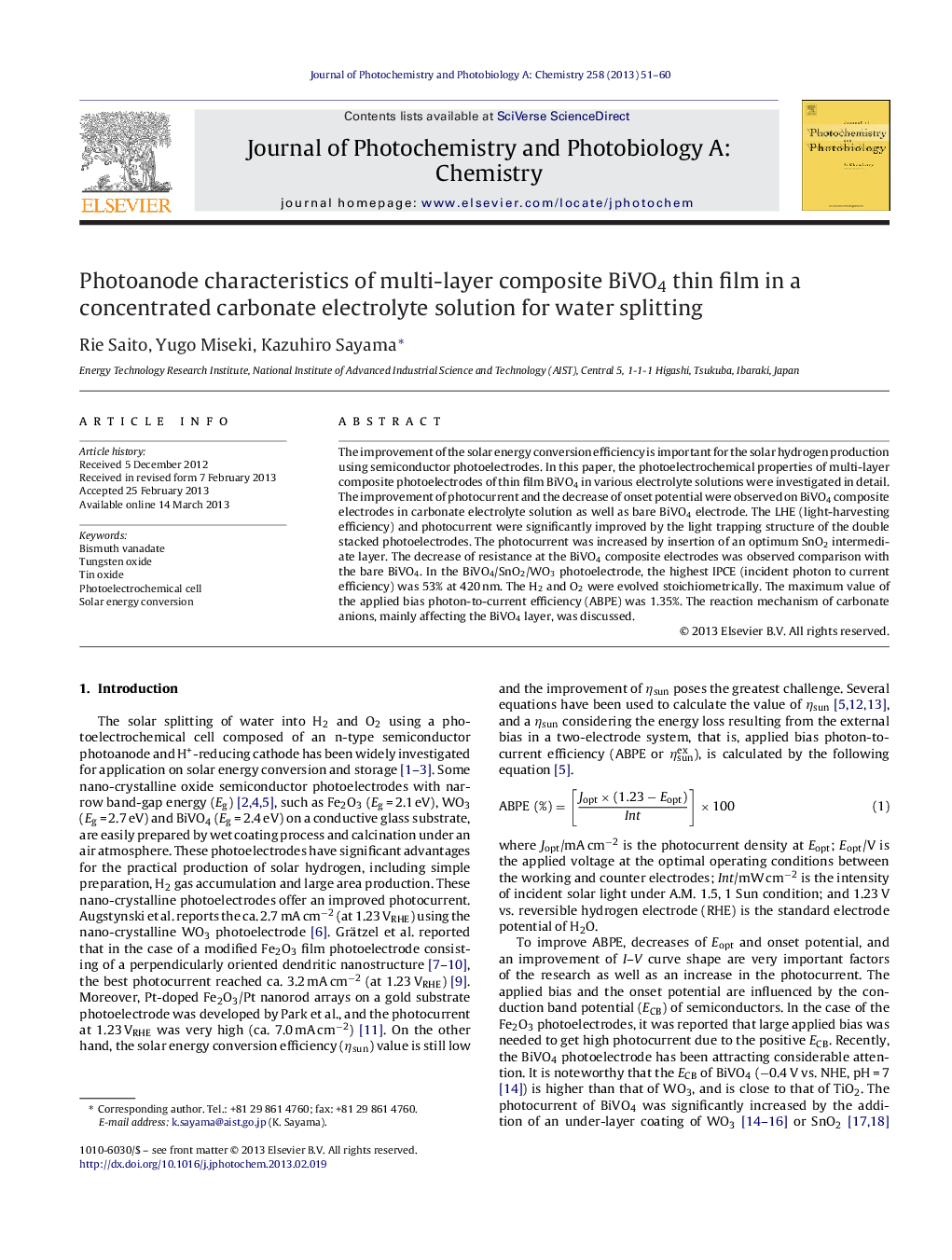| Article ID | Journal | Published Year | Pages | File Type |
|---|---|---|---|---|
| 27691 | Journal of Photochemistry and Photobiology A: Chemistry | 2013 | 10 Pages |
The improvement of the solar energy conversion efficiency is important for the solar hydrogen production using semiconductor photoelectrodes. In this paper, the photoelectrochemical properties of multi-layer composite photoelectrodes of thin film BiVO4 in various electrolyte solutions were investigated in detail. The improvement of photocurrent and the decrease of onset potential were observed on BiVO4 composite electrodes in carbonate electrolyte solution as well as bare BiVO4 electrode. The LHE (light-harvesting efficiency) and photocurrent were significantly improved by the light trapping structure of the double stacked photoelectrodes. The photocurrent was increased by insertion of an optimum SnO2 intermediate layer. The decrease of resistance at the BiVO4 composite electrodes was observed comparison with the bare BiVO4. In the BiVO4/SnO2/WO3 photoelectrode, the highest IPCE (incident photon to current efficiency) was 53% at 420 nm. The H2 and O2 were evolved stoichiometrically. The maximum value of the applied bias photon-to-current efficiency (ABPE) was 1.35%. The reaction mechanism of carbonate anions, mainly affecting the BiVO4 layer, was discussed.
Graphical abstractFigure optionsDownload full-size imageDownload as PowerPoint slideHighlights► The photocurrent of the multi-layer BiVO4 composite was improved in the HCO3− electrolyte. ► The effect of HCO3− occurred at the BiVO4 part, not at under layers. ► The reaction mechanisms via active intermediates such as peroxocarbonates were suggested. ► The evaluated resistance was decreased by the inserting WO3 and SnO2 layer.
